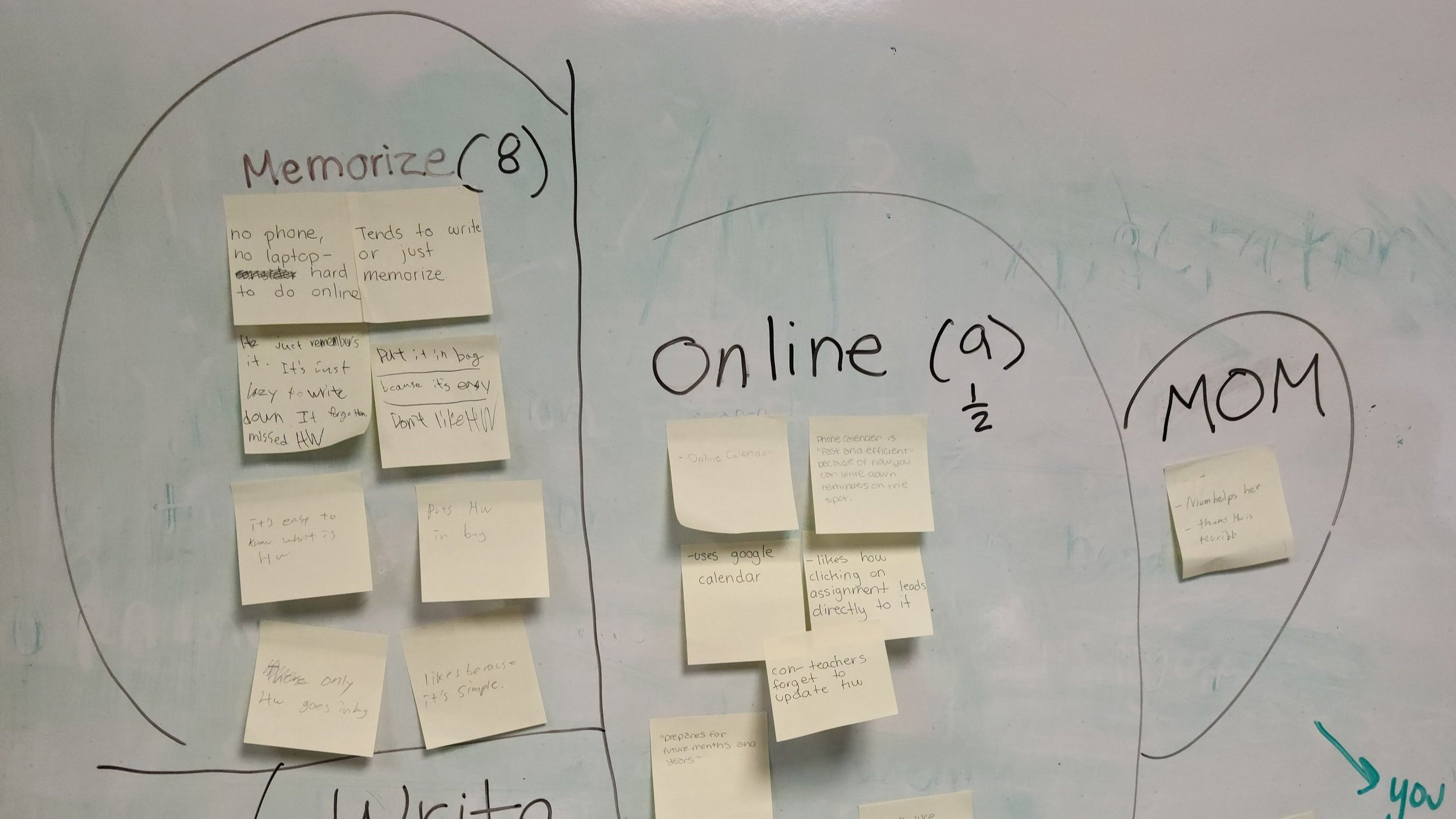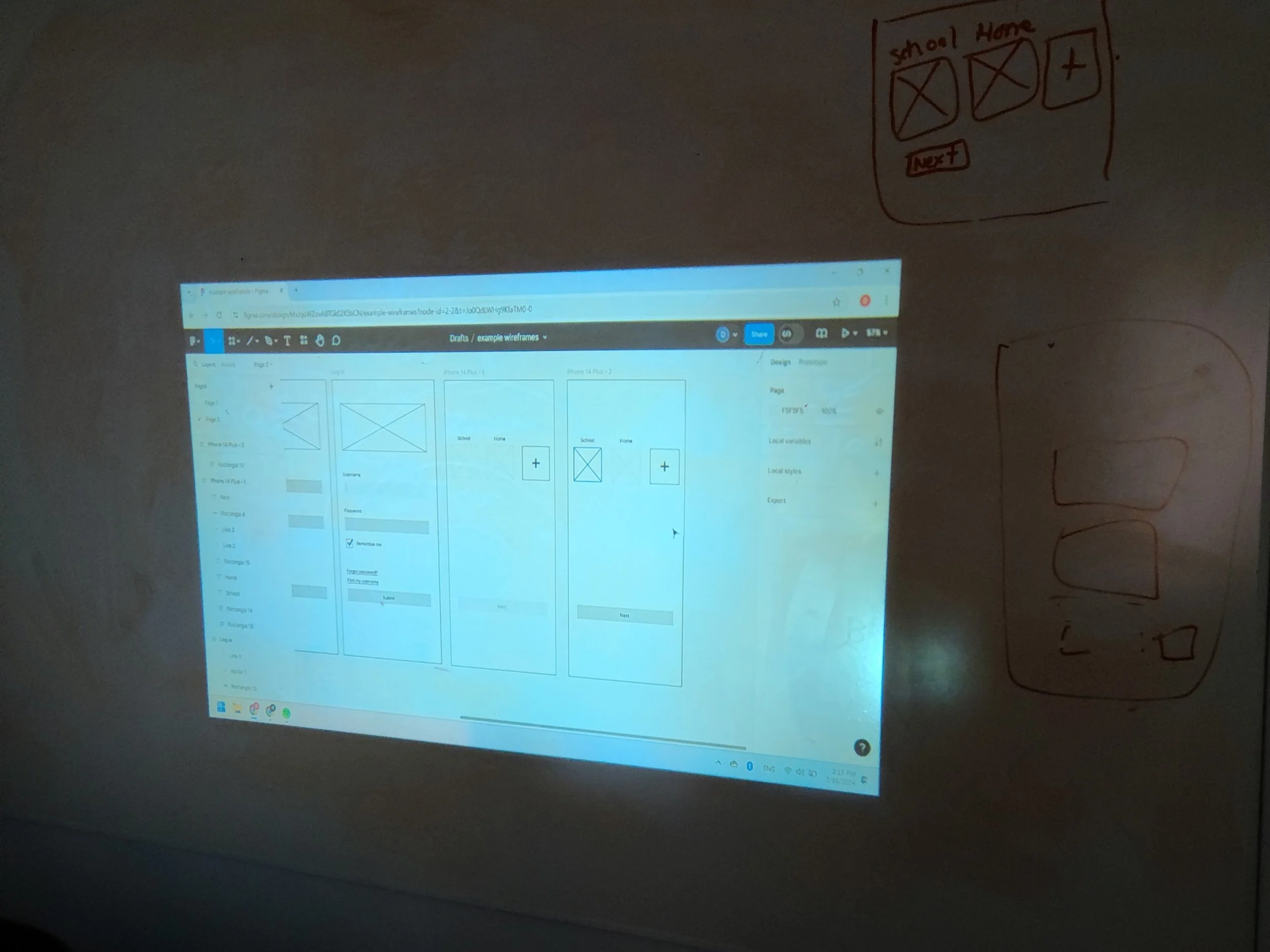
Teaching UX Design to Teens
I had the wonderful opportunity to teach students of ages 12 to 13 about UX Design at a summer camp. The UX Design course was offered as a small 6 session introductory class for students to gain rudimentary knowledge of the field and gain first-hand experience in building digital designs.
Although I had plenty of experience in teaching, this was my first time instructing UX Design specifically. Teaching UX Design presented its own challenges, but the real test lay in effectively communicating to a very young audience unversed in technology and design.
Demonstration of Figma for digital wireframing
The Syllabus
When creating a lesson plan, I struggled to narrow down the content to fit into six sessions. I focused on selecting only a few important UX topics, avoiding deep discussions and details that might be too difficult for young students to fully comprehend. Since this was intended to be a short introductory course, I felt it paramount to keep lessons fun and engaging. To keep up engagement, I weaved in group activities between lectures, and assigned creative homework assignments.
As a result, I spaced out lessons across six sessions in the following way:
Day 1: Intro to UX Design
What is UX?
UX vs UI
The UX Design Process
UX Research
Day 2: Defining the Problem
Affinity Maps & Building Personas
User Maps & User Flow
Brainstorming
Day 3: Ideation
User Journey & User Flow
Paper
Day 4: Intro to Figma
Digital Wireframing on Figma
Gestalt Principles
Day 5: Design Workshop
In-class workshop
Usability Tests
Day 6: Presentations
Project presentation
Feedback session
Creating Activities
Between every lesson, I made sure to include activities to boost student engagement and learning. There is no better learning than doing, and the students showed great enthusiasm in completing group activities.
Activity designed to give students a chance to interview, brainstorm, and create solutions for a user.
Homework was assigned every session to get students to practice newly acquired knowledge.
Each activity was designed with unique learning outcomes. For example, their first homework activity was to design a new car steering wheel completely based on assumptions, only to debunk those by assumptions by interviewing their parents.
Through this homework activity, students realized shortcomings in their knowledge of designing for users, and learned the importance of user research and fighting assumptions.
Personal Projects
I had hoped to give every student a hands-on experience on a UX project from start to finish in order to provide them a better understanding of the field. Thus I assigned everyone a personal project– to create a mobile app for users to organize their homework and tasks. I believed that by choosing a relatable topic, students would be better engaged in their project. I also believed by assigning everyone the same topic, students could collaborate and push each other.
Affinity mapping with sticky notes as a class
Challenges and Takeaways
Teaching UX design to a young audience was challenging but incredibly rewarding at the same time. Here are some of the lessons I learned from teaching young students.
Make lessons interactable
Not all students had a vested interest in UX design and learning. Activities were imperative to retain students’ attention and interest. Homework should also be intended to be fun and easy, but with important UX learning outcomes.
Give frequent feedback
As student were trying UX for the first time, many were incredibly confused and unsure about what to do. As the instructor, I had to be attentive to each student and help guide them individually throughout lessons. I recommend future instructors to make the extra effort in monitoring each student’s progress, especially if it’s with a young audience.
Do digital work
While lectures are important, nothing got the students more excited than using their computers to do digital design. With young students, having fun aids in learning. Squeeze in as much key UX knowledge in lecture slides, but transition quickly to hands-on digital work so that students find more interest in UX design.
Explain using simple and relatable examples
It’s difficult to teach young students the same way one would teach UX to adults. There are many difficult terms involved in teaching UX, and it’s important to explain those using images and simple words. For example, to explain the applications of UX design, I compared it to buying a subway ticket from a kiosk.




